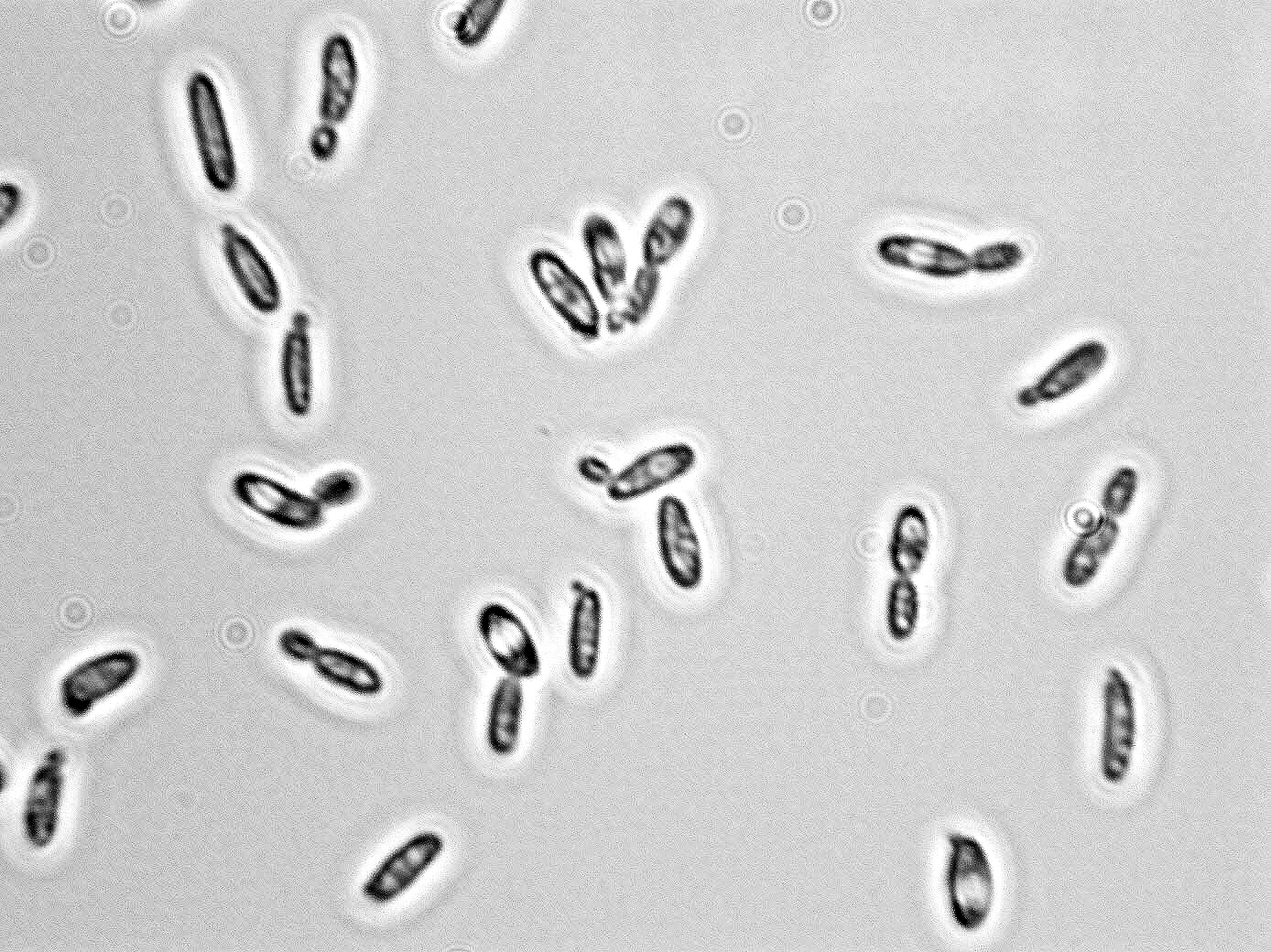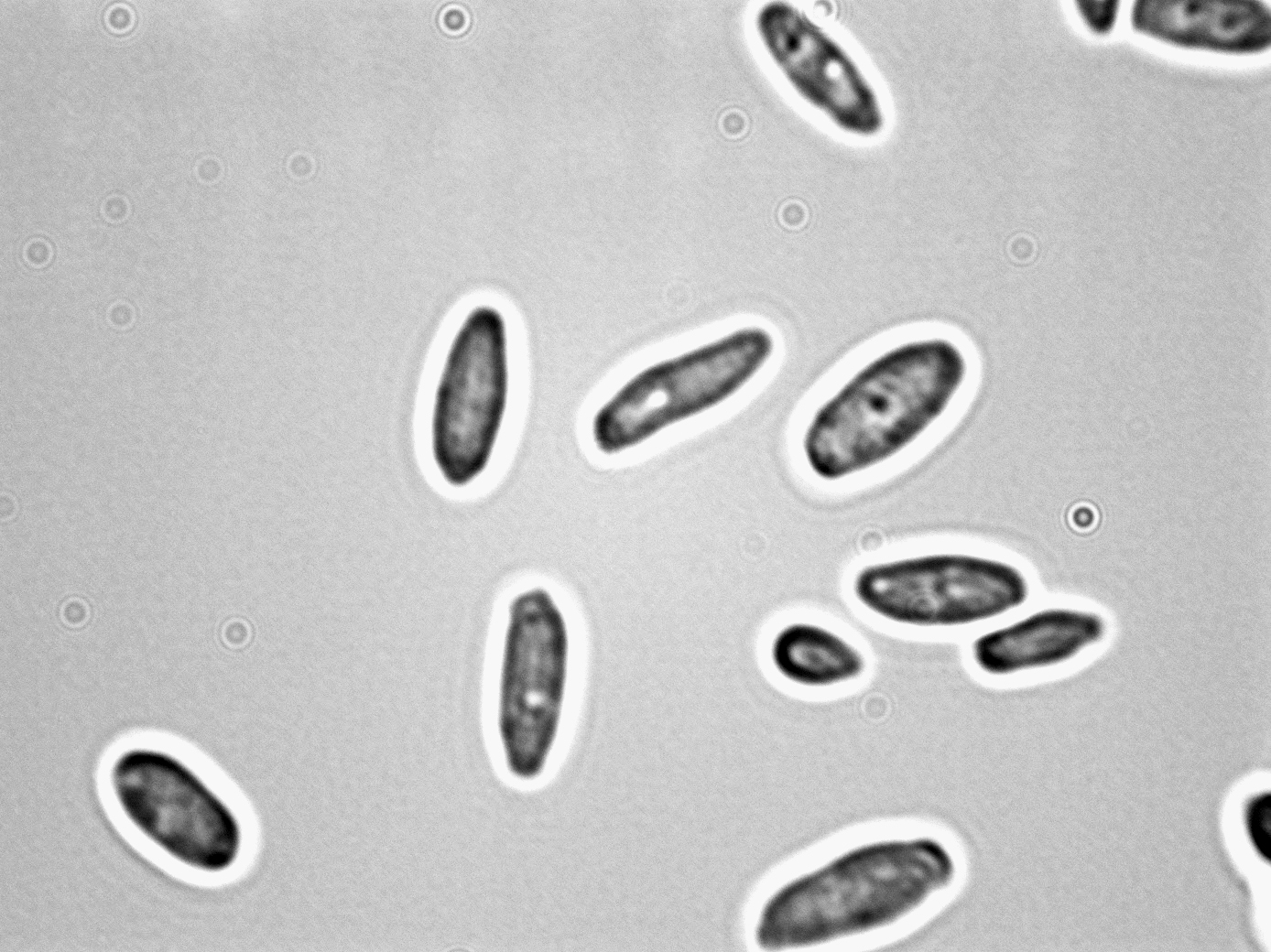Genus/species: Candida krusei (anamorph) (Issatchenkia orientalis; teleomorph)
Classification: Ascomycete
Morphology:
- Cell: Small elongated to ovoid budding yeast, 2.0-5.5 x 4.0-15.0 μm
- Colony: Malt Agar: large round white colonies WL: yes, quick growth
- Spore: NA
- Zygote: NA
- Ascus: NA
- Liquid Growth: forms a vigorous climbing pellicle at the edge of the liquid in a glass container.
 |
 |
 |
Physiological Traits:
- Produce pseudohyphae
- Ferments glucose
- Assimilates lactic acid and succinic acid. Does not assimilate mannitol, glucitol, potassium nitrate, lactose, ribitol, galactose, raffinose, maltose, cellobiose, sucrose, or melibiose.
Ecological Traits:
Found on berry surfaces, animal feces, fruit flies, dairy products, beer, and used in chocolate production.
Distinguishing Features:
Pseudohyphae and elongate blastoconidia. Characteristic fruity smell.
Role in Wine:
Can co-ferment a wine, especially at low temperature. Presence in wine contributes to slime formation and ropiness.
Sensitivities:
- SO2-sensitive
- Sorbate--tolerant at 365mg/L, sensitive to higher concentrations
- DMDC-sensitive
- pH: high tolerance
- Acids:high tolerance
- Ethanol: tolerance up to 6.6%
- Anaerobiosis- facultive anaerobes
- Heat- 10°-42°C optimum
References:
- Charoenchai, C., Fleet, G.H. and Henschke,P.A. 1998. Effects of Temperature, pH, and Sugar Concentration on the Growth Rates and Cell Biomass of Wine Yeasts. Am. J. Enol. Vitic., Sep 1998; 49: 283 - 288.
- Essayag, S. M., Baily, G. G.,Denning, D. W. and Burnie, J. P. 1996. Karyotyping of Fluconazole-Resistant Yeasts with Phenotype Reported as Candida krusei or Candida inconspicua. International Journal of Systematic Bacteriology Jan, 1996, p. 35-40
- Subden, R. E., Cornell, R., and Noble, A. C. 1980. Evaluation of API 20C Clinical Yeast Identification System for Must and Wine Yeast Identification Am. J. Enol. Vitic., Dec 1980; 31: 364 - 366.
